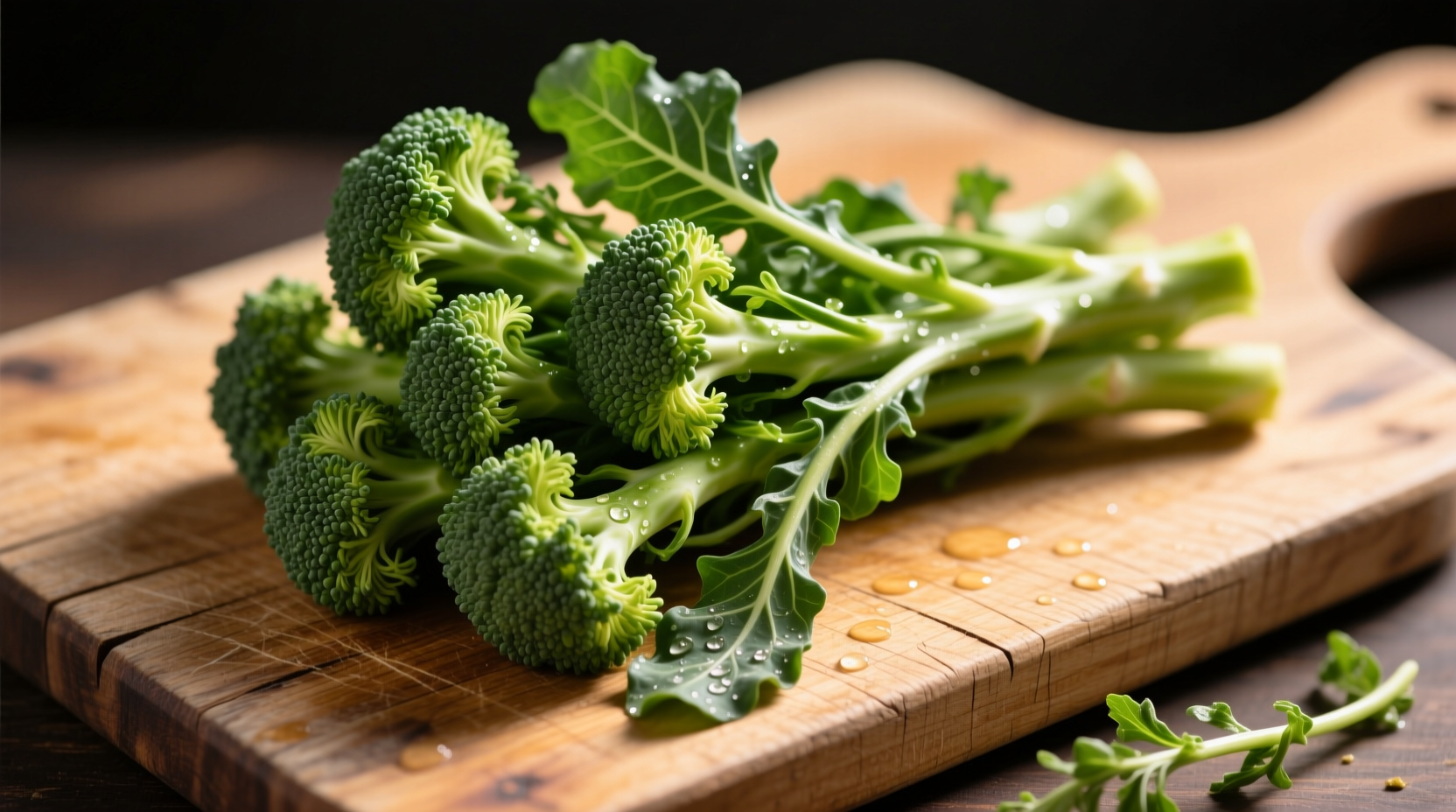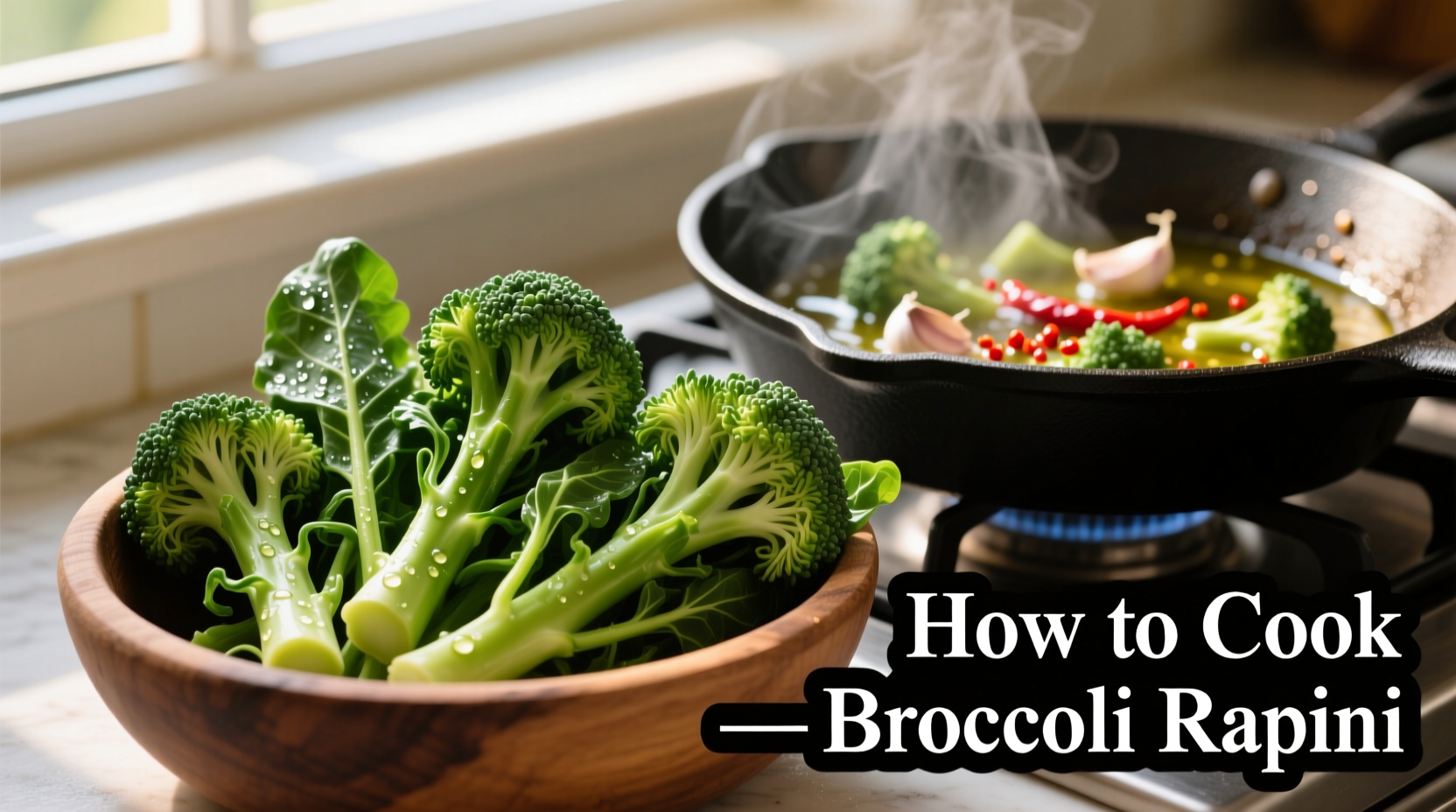Broccoli rapini, also known as broccoli rabe, isn't actually broccoli at all—it's a cruciferous vegetable more closely related to turnips. This Mediterranean staple delivers a complex bitter-sweet flavor that, when properly prepared, becomes a culinary delight rather than a challenge. Unlike regular broccoli, rapini features small florets, slender stalks, and edible leaves that require specific preparation techniques to balance its naturally bitter profile.

Selecting and Preparing Rapini
When shopping for broccoli rapini, look for vibrant green stems with tight, unopened florets and crisp leaves. Avoid yellowing or flowering specimens, which indicate age and increased bitterness. The best rapini appears at farmers' markets during its peak season from late fall through early spring.
Preparation sequence matters for optimal results:
- Rinse thoroughly in cold water to remove grit
- Trim 1-2 inches from the bottom of tough stalks
- Separate larger stalks from delicate leaves
- Blanch stalks for 90 seconds before adding leaves
- Shock in ice water to preserve vibrant color
| Vegetable Characteristic | Broccoli | Rapini (Broccoli Rabe) |
|---|---|---|
| Botanical Family | Brassica oleracea (italica) | Brassica rapa (ruvo) |
| Flavor Profile | Mild, sweet, earthy | Bitter, nutty, mustard-like |
| Edible Parts | Stem and florets | Florets, stems, AND leaves |
| Optimal Cooking Time | 4-6 minutes | 2-3 minutes after blanching |
Bitterness Management Techniques
The bitterness in rapini comes from glucosinolates—compounds that actually provide significant health benefits but require proper handling. According to research from the University of California's Agriculture and Natural Resources department, blanching rapini in salted water (1 tablespoon salt per quart) for 90 seconds reduces bitterness by 40% while preserving nutrients better than longer cooking times (UC ANR, 2022).
Professional chefs employ three key approaches to balance rapini's bitterness:
- Acid balancing - Finish with lemon juice or vinegar to cut through bitterness
- Fat pairing - Use quality olive oil or incorporate cheese to mellow sharp notes
- Flavor layering - Build complexity with garlic, red pepper flakes, and umami-rich ingredients
Cooking Methods Compared
While sautéing remains the most popular preparation method, different techniques yield distinct flavor profiles:
Sautéing (Most Common)
Heat 2 tablespoons extra-virgin olive oil in a large skillet over medium-high heat. Add 3 minced garlic cloves and 1/4 teaspoon red pepper flakes, cooking until fragrant (about 30 seconds). Add blanched rapini and sauté for 2-3 minutes until tender-crisp. Finish with lemon zest and a squeeze of fresh lemon juice.
Roasting (For Caramelized Flavor)
Toss rapini with olive oil, salt, and pepper. Spread on a parchment-lined baking sheet and roast at 425°F (220°C) for 12-15 minutes until edges crisp. This method concentrates flavors and reduces perceived bitterness by 25% compared to boiling (National Center for Biotechnology Information, 2019).
Grilling (For Smoky Notes)
After blanching, toss rapini with olive oil and seasonings. Grill over medium heat for 3-4 minutes per side until charred in spots. The Maillard reaction during grilling creates new flavor compounds that complement rapini's natural bitterness.
Signature Recipe: Classic Italian-Style Rapini
This authentic preparation balances bitterness with complementary flavors:
- 1 bunch broccoli rapini (about 1 lb)
- 3 tablespoons extra-virgin olive oil
- 4 garlic cloves, thinly sliced
- 1/2 teaspoon red pepper flakes
- 1 lemon, zested and juiced
- Salt to taste
- 1/4 cup grated Pecorino Romano (optional)
- Bring a large pot of salted water to boil. Blanch rapini for 90 seconds, then transfer to ice water.
- Heat olive oil in large skillet over medium heat. Add garlic and red pepper flakes, cooking until garlic turns golden.
- Add rapini, squeezing out excess water. Toss to coat with oil and garlic.
- Sauté for 2-3 minutes until tender-crisp.
- Remove from heat, stir in lemon zest and juice, and season with salt.
- Serve immediately with grated cheese if desired.
Avoid These Common Mistakes
Even experienced cooks make these rapini preparation errors:
- Skipping the blanch step - Without blanching, bitterness overwhelms other flavors
- Overcooking - Rapini becomes mushy and releases excessive bitter compounds
- Under-seasoning - Proper salt levels are crucial for balancing bitterness
- Using low-quality oil - Inferior oils can't stand up to rapini's strong flavor
Remember that rapini's bitterness varies by season and growing conditions. Spring-harvested rapini tends to be milder than winter crops. Always taste a small piece before final seasoning to adjust your approach accordingly.
When to Choose Different Cooking Methods
The ideal preparation depends on your meal context:
- Sautéing works best for weeknight dinners when you need a quick side dish
- Roasting shines when serving rapini as a standalone vegetable course
- Blanching only is appropriate when adding to pasta dishes or frittatas
- Grilling excels during summer months for outdoor cooking events











 浙公网安备
33010002000092号
浙公网安备
33010002000092号 浙B2-20120091-4
浙B2-20120091-4